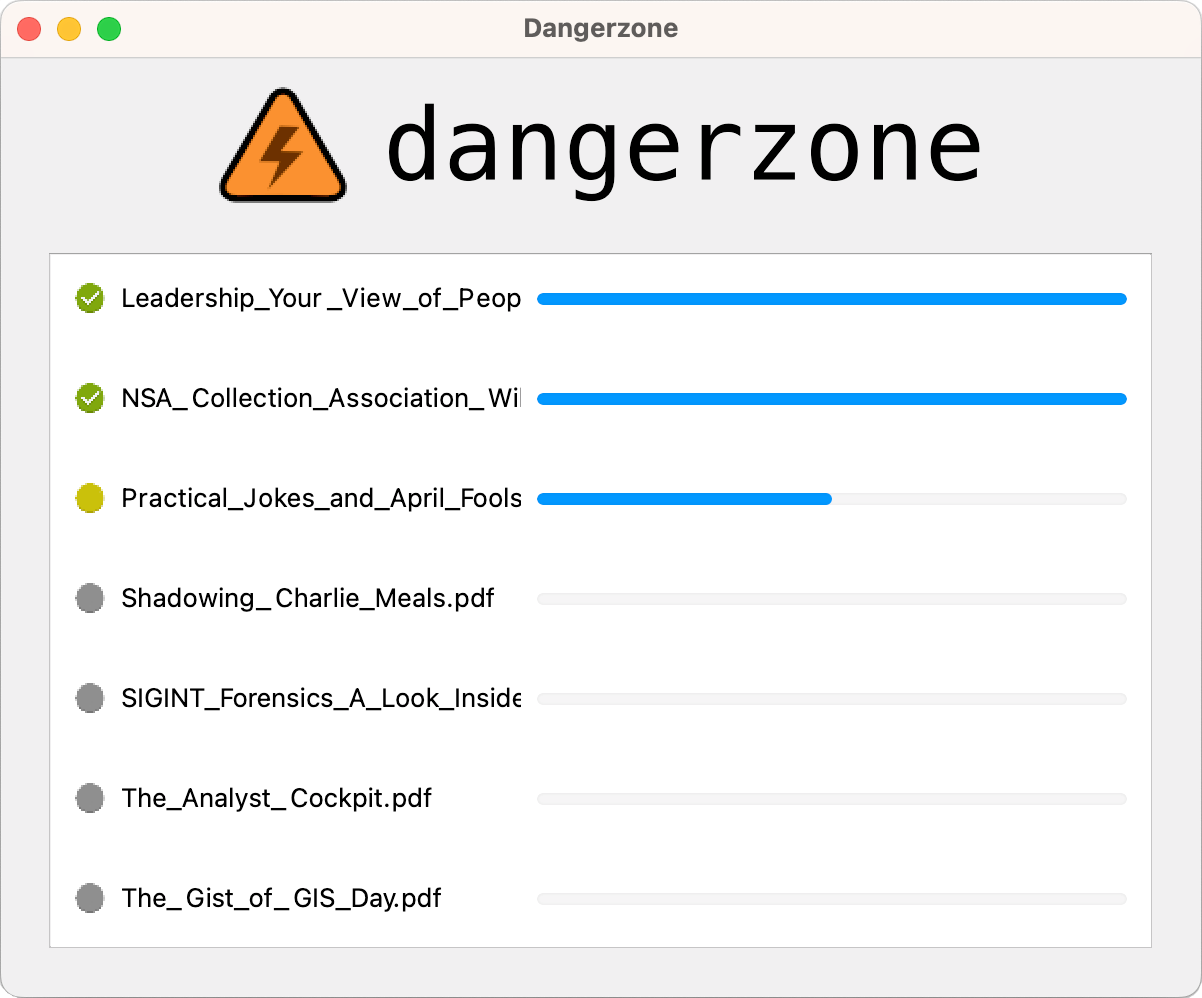Install the following packages in Dangerzone envs:
* python3-setuptools: We've seen that this package is necessary to build
the RPM package for Dangerzone. The error that we encountered was the
following:
* Deleting old build and dist
* Building RPM package
Traceback (most recent call last):
File "/home/user/dangerzone/setup.py", line 5, in <module>
import setuptools
ModuleNotFoundError: No module named 'setuptools'
Traceback (most recent call last):
File "/home/user/./dangerzone/install/linux/build-rpm.py", line 43, in <module>
main()
File "/home/user/./dangerzone/install/linux/build-rpm.py", line 30, in main
subprocess.run(
File "/usr/lib64/python3.11/subprocess.py", line 571, in run
raise CalledProcessError(retcode, process.args,
subprocess.CalledProcessError: Command 'python3 setup.py bdist_rpm --requires='podman,python3-pyside2,python3-appdirs,python3-click,python3-pyxdg,python3-colorama'' returned non-zero exit status 1.
* fuse-overlayfs: In Ubuntu 22.10 (at least), we encountered the
following error when running Podman:
ERRO[0000] User-selected graph driver "overlay" overwritten by
graph driver "vfs" from database - delete libpod local files to
resolve
The `vfs` driver is much slower than the `overlayfs` storage driver,
so we need to fix this. The reason why we encounter this error is
explained in the Podman docs [1]:
[...] and is vfs for non-root users when fuse-overlayfs is not
available.
Normally, the `fuse-overlayfs` package would have been installed, but
we don't install it due to the `--no-install-recommends` flag, so we
install it manually.
[1]: https://docs.podman.io/en/latest/markdown/podman.1.html#storage-driver-value
|
||
|---|---|---|
| .circleci | ||
| .github/workflows | ||
| assets | ||
| container | ||
| dangerzone | ||
| dev_scripts | ||
| install | ||
| share | ||
| tests | ||
| .gitignore | ||
| BUILD.md | ||
| CHANGELOG.md | ||
| INSTALL.md | ||
| LICENSE | ||
| Makefile | ||
| poetry.lock | ||
| pyproject.toml | ||
| README.md | ||
| RELEASE.md | ||
| setup-windows.py | ||
| setup.py | ||
| stdeb.cfg | ||
Dangerzone
Take potentially dangerous PDFs, office documents, or images and convert them to a safe PDF.
 |
 |
|---|
Dangerzone works like this: You give it a document that you don't know if you can trust (for example, an email attachment). Inside of a sandbox, Dangerzone converts the document to a PDF (if it isn't already one), and then converts the PDF into raw pixel data: a huge list of RGB color values for each page. Then, in a separate sandbox, Dangerzone takes this pixel data and converts it back into a PDF.
Read more about Dangerzone in the official site.
Getting started
- Download Dangerzone 0.4.0 for Mac
- Download Dangerzone 0.4.0 for Windows
- See installing Dangerzone for Linux repositories
You can also install Dangerzone for Mac using Homebrew: brew install --cask dangerzone
Some features
- Sandboxes don't have network access, so if a malicious document can compromise one, it can't phone home
- Dangerzone can optionally OCR the safe PDFs it creates, so it will have a text layer again
- Dangerzone compresses the safe PDF to reduce file size
- After converting, Dangerzone lets you open the safe PDF in the PDF viewer of your choice, which allows you to open PDFs and office docs in Dangerzone by default so you never accidentally open a dangerous document
Dangerzone can convert these types of document into safe PDFs:
- PDF (
.pdf) - Microsoft Word (
.docx,.doc) - Microsoft Excel (
.xlsx,.xls) - Microsoft PowerPoint (
.pptx,.ppt) - ODF Text (
.odt) - ODF Spreadsheet (
.ods) - ODF Presentation (
.odp) - ODF Graphics (
.odg) - Jpeg (
.jpg,.jpeg) - GIF (
.gif) - PNG (
.png)
Dangerzone was inspired by Qubes trusted PDF, but it works in non-Qubes operating systems. It uses containers as sandboxes instead of virtual machines (using Docker for macOS, Windows, and Debian/Ubuntu, and podman for Fedora).
Set up a development environment by following these instructions.